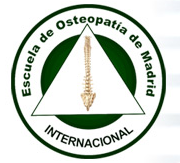Diabetes: Peripheral blood circulation, peripheral neuropathy (Self foot reflexology)
Purpose: This study was done to investigate the effect of self-foot reflexology on peripheral blood circulation, peripheral neuropathy and to determine the feasibility of self-foot reflexology as a nursing intervention.
Method: This was non equivalent control pretest-posttest study with 76 patients with type 2 diabetes mellitus (ages between 40-79) recruited from public health centers in Busan city. Intervention was a 6 week self-foot reflexology, and outcome variables were peripheral blood circulation and peripheral neuropathy (tactile response to monofilament, intensity of symptoms of peripheral neuropathy). ANCOVA was used to do the statistical analysis. A .05 significance level was set for evaluating the effects of self-foot reflexology.
Results: The self-foot reflexology was relatively effective not only in reducing peripheral neuropathy (especially tingling sensation and pain) but also in improving ability to sense the 10-g force monofilament.
Conclusion: Even though self-foot reflexology was not effective in improving peripheral circulation, it had good effect on improving peripheral neuropathy. Therefore self-foot reflexology can be used as a nursing intervention program for promoting foot care for patients with DM patients. Jeong IS., "Effect of Self-Foot Reflexology on Peripheral Blood Circulation and Peripheral Neuropathy in patients with Diabetes Mellitus," Journal of Korean Acad Fundamental Nursing 2006 Aug;13(2):225-234. Korean. College of Nursing, Pusan National University, Korea.
Reflexology Research Proyect Presents










 Master PCMH Criteria with Upcoming Webinars
Master PCMH Criteria with Upcoming Webinars







 The American Osteopathic Association (AOA) is the representative organization for the over 70,000 osteopathic physicians (DOs) and 18,000 osteopathic medical students in the United States. The organization promotes public health, encourages scientific research, serves as the primary certifying body...
The American Osteopathic Association (AOA) is the representative organization for the over 70,000 osteopathic physicians (DOs) and 18,000 osteopathic medical students in the United States. The organization promotes public health, encourages scientific research, serves as the primary certifying body...










 3:28
3:28
 Daniel Enriquez de Guevara
Daniel Enriquez de Guevara













.jpg)


















1 comentarios:
Website for the anatomy especially designed by the medical student to keep their knowledge up date in accordance with the new research.
Physical Therapy Management
Publicar un comentario